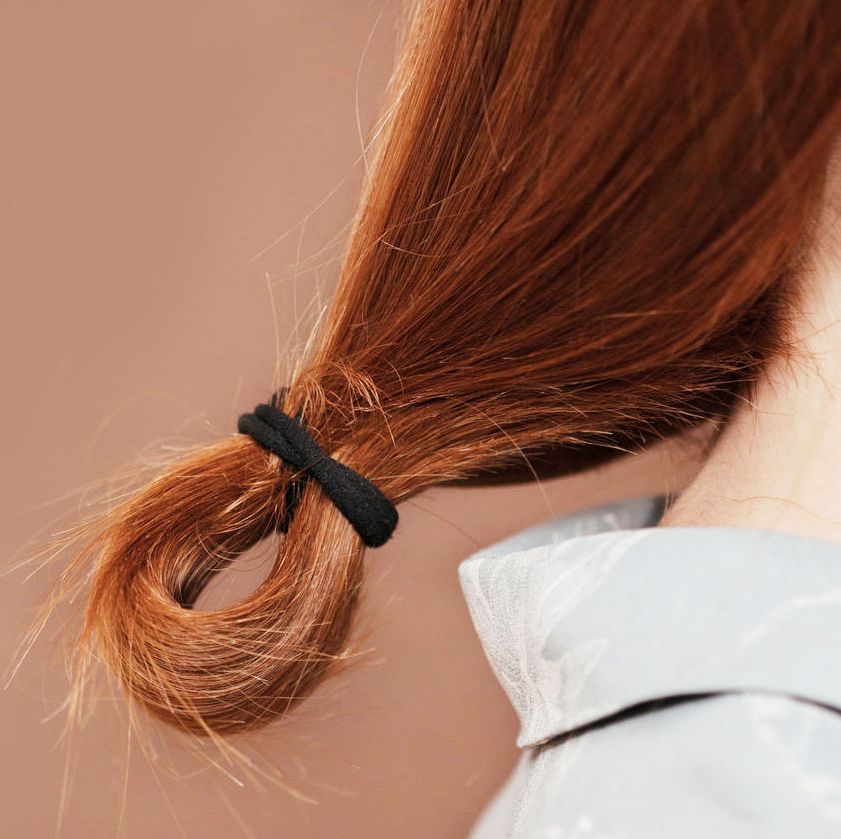Split ends are a common hair problem that many people face. They occur when the hair shaft splits at the end, causing the hair to look frayed and damaged. Split ends can be caused by a variety of factors, including heat styling, chemical treatments, and environmental factors like pollution and sun exposure. While there are many products on the market that claim to repair split ends, the truth is that the only way to get rid of them is to trim them off.
But, does trimming split ends make them worse? This is a question that many people ask, and the answer is no. In fact, trimming split ends can actually improve the overall health of your hair. Here’s why.
When you have split ends, the damage doesn’t just stop at the end of the hair shaft. The split can continue to travel up the hair, causing even more damage. This can lead to breakage, thinning, and overall weakened hair. By trimming split ends, you’re removing the damaged portion of the hair and preventing the split from traveling further up the shaft. This allows the hair to grow and remain healthy.
Trimming split ends also helps to improve the appearance of your hair. Split ends can make hair look frizzy, dull, and lifeless. By removing the split ends, you’re giving your hair a fresh start and allowing it to look fuller, shinier, and healthier. It’s like giving your hair a mini makeover!
It’s important to note that trimming split ends won’t prevent them from happening in the future. To prevent split ends, it’s important to take good care of your hair. This includes avoiding excessive heat styling, using a heat protectant when you do use heat, avoiding chemical treatments, and protecting your hair from the sun and other environmental factors. Regular trims evey 6-8 weeks can also help to keep split ends at bay.
Trimming split ends does not make them worse. In fact, it’s an important step in maintaining the health and appearance of your hair. While it may seem counterintuitive to cut your hair when you’re trying to grow it out, regular trims can actually help your hair to grow longer and stronger. So, don’t be afraid to make that appointment with your hairstylist and get those split ends trimmed off!
The Benefits and Risks of Cutting Individual Split Ends
It is okay to cut individual split ends. In fact, it can be beneficial for the overall health and appearance of your hair. By cutting off split ends, you prevent the split from traveling up the hair shaft and causing further damage. However, it is important to use sharp scissors and only cut the split end itself, rather than large sections of hair. Additionally, regularly trimming your hair can prevent split ends from occurring in the first place.

Consequences of Not Trimming Split Ends
If you don’t trim split ends, they will continue to unravel up the hair shaft. This can cause the hair to look thin and frail as the split ends make the hair strands weaker. Moreover, the split ends will continue to split much more rapidly if left untrimmed, which can cause more damage to the hair. Eventually, the hair may become too damaged and may need to be cut shorter than desired to remove the split ends. Therefore, it is recommended to trim split ends regularly to maintain healthy and strong hair.
Are Split Ends Permanent?
Split ends are not permanent, but they cannot be fully repaired. Once the hair strand splits, the damage is done and cannot be reversed. However, you can temporarily mend the split ends with various haircare treatments such as leave-in conditioners, hair masks, and serums. These treatments can help to smooth and seal the cuticle, reducing the appearance of split ends and preventing further damage. However, the only long-term solution for split ends is to trim them off. Regular haircuts every 6-8 weeks can help to prevent split ends from occurring and keep your hair looking healthy and shiny.
Getting Rid of Split Ends at the Barber
Barbers have several methods to get rid of split ends. One of the most effective ways is to use hot scissors. Hot scissors use high heat to seal the hair cuticle, which helps to cure split ends permanently without sacrificing the length. The heat from the scissors helps to melt and fuse the ends of the hair strands, preventing them from splitting further. This method is partcularly suitable for people with long hair who want to keep the length but get rid of split ends. Another way is to trim the split ends manually using scissors or shears. This method involves cutting off the split ends one by one, which can be time-consuming, but it ensures that only the damaged ends are removed. Some barbers also use a technique called “dusting,” in which they lightly trim the ends of the hair to remove any damaged or split ends without removing too much length. Ultimately, the method a barber chooses will depend on the severity of the split ends and the client’s hair type and length.
How Often Should Split Ends Be Trimmed?
Split ends are a common hair problem that occurs when the protective outer layer of the hair cuticle becomes damaged, causing the hair to split into two or more strands. Unfortunately, once split ends occur, they cannot be repaired or fixed, and the only solution is to trim them off. To maintain healthy and beautiful hair, it is recommended that split ends shold be trimmed every 2 to 3 months. The frequency of trimming can vary depending on the length of your hair and the desired hairstyle. However, waiting too long between trims can cause the split ends to travel further up the hair shaft, resulting in more significant hair damage. Therefore, regular trims are essential to prevent further damage and maintain healthy hair.

Frequency of Hair Trimming to Prevent Split Ends
Split ends are a common hair problem that can make your hair appear dull, dry, and damaged. To prevent split ends, it is important to get regular hair trims. Typically, it is recommended that you get a trim every 6-8 weeks, depending on your hair type and length. This will help to keep your hair healthy and prevent the split ends from spreading up the hair shaft. If you are tryng to grow out your hair, you can wait a bit longer between trims, but it is still important to get regular trims every 8-10 weeks to keep your hair in good condition. By following these simple guidelines, you can help to keep your hair looking healthy, shiny, and beautiful.
How Often Should You Trim Your Hair Ends?
In order to maintain healthy hair, it is generally recommended to trim your ends every 3 to 4 months. This allows enough time for your hair to grow out and for any split ends or damage to be cut off. Trimming your ends regularly also helps to prevent breakage and promote hair growth. However, the frequency of trims may vary depending on individual hair type and lifestyle factors such as heat styling or chemical treatments. Consulting with a hairstylist can provide personalized recommendations for how often you should trim your ends.
Conclusion
Trimming split ends is an essential step to maintaining healthy hair. Once the hair is damaged, split ends will continue to unravel up the hair shaft, causing futher damage and breakage. While it may be tempting to avoid trimming split ends in an effort to maintain length, it is important to remember that healthy hair is better than long hair. Regular trims every 6-8 weeks will help prevent split ends from forming and keep hair looking and feeling healthy. Remember, the only way to completely get rid of split ends is to cut them off, so don’t be afraid to book that appointment with your hairstylist. Your hair will thank you for it!
